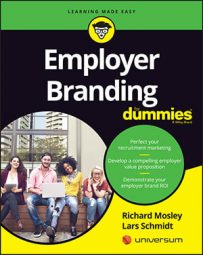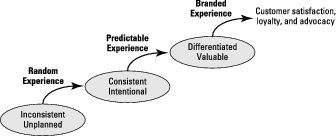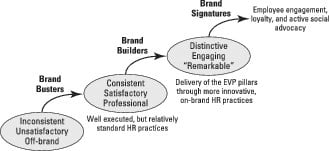Consider the brand experience of an airline customer, and the complex coordination of services required to deliver a distinctively positive experience. More often than not, the process starts online with a digital experience:
- How informative and easy to use is the website?
- On the way to the airport can the customer check-in using her smartphone and keep up to date with any changes that may be affecting the flight schedule?
- How easy is it for the customer to check in her bags?
- How friendly and informative are the customer service assistants at the check-in desk?
- Once onboard, how comfortable is the seat?
- What kind of entertainment is available?
- How good is the food being served?
- How attentive is the cabin crew?
Thinking differently about HR and your employer brand
The reason leading airlines pay so much attention to the design and consistent delivery of the customer experience is that airline passengers (especially frequent flyers) can generally choose between providers. Because employees (especially the most talented) are also free to choose between employers, it surely makes sense for companies to apply the same rigor and discipline to managing the employment experience.This has not been the kind of thinking HR has conventionally applied, but the HR function looks set to go through another period of transformation with significant signs of convergence between talent management and customer experience management thinking.
Stop thinking of HR as an administrative function and start thinking of it as a customer service department for employees.
Reviewing your current employment experience
Shaun Smith, the author of Managing the Customer Experience (Pearson FT Press), identifies three levels of customer experience, with the ultimate goal of delivering a differentiated branded experience that’s not merely reliably good in delivering against service expectations but distinctively great in delivering unique customer value.The employee experience is generally more complex than most customer service experiences, but your company would benefit from adopting a similar approach. The goal is to climb the ladder from brand busters to brand signatures.
Spotting brand busters
Brand busters are employment experiences that undermine the employer brand for any number of reasons, such as the following:- Inconsistent experience: Inconsistencies in the employment experience are typically the result of having no people management process in place or executing the process that is in place inconsistently. Induction and orientation processes are prone to these kind of inconsistencies in many organizations.
- Unsatisfactory experience: Employees are typically dissatisfied with the employment experience as a result of poor process design, insufficient investment, or both. In many organizations, employees are most often disappointed with career development and mobility.
- Off-brand experience: The preceding two brand busters may relate to any aspect of the employment experience, but an off-brand experience is more specific to your employer brand promises. If you promise “a world of opportunities” but have no process or investment in place to advance employees’ careers abroad, then you have a classic brand buster on your hands.
Identifying brand builders
Brand builders are consistently positive employment experiences resulting from professional, well-executed, but relatively standard HR procedures. To step up from brand busters to brand builders, all you need to do is figure out what your competitors are doing well and follow their lead. You don’t need to do anything special.Raising the bar: Brand signatures
If your organization has successfully turned brand busters into brand builders, and has a consistently positive and professional approach to people management process, the next level to aspire to from an employer brand perspective is the development of signature experiences — elements of your company’s employment experience that make the experience unique and superior to that offered by competitors. Signature experiences are of value to employees and to the organization, but they also serve as constant reminders of the company’s culture and values.Signature experiences may be different by degree, in terms of the amount of emphasis or investment dedicated to the underlying process or practice. For example, you may have a career path model that is similar to other companies, but better because you invested more than your leading talent competitors in the kind of software that enables employees to map out different career options and training requirements.
Alternatively, the employment experience could be different in kind, which means it includes elements unique to your organization. These generally require greater investment in imagination than money.
Signature experiences may define processes that are so central to the organization, they could be seen by many as defining its core ethos, such as Kaizen, Toyota’s continuous improvement process, or GE’s lean-thinking Work-Out. In other cases, it simply represents a distinctive aspect of the business such as IBM’s online collaborative Jam sessions. Some companies, including Google and Virgin, seem to be naturally drawn to creating signature experiences.



